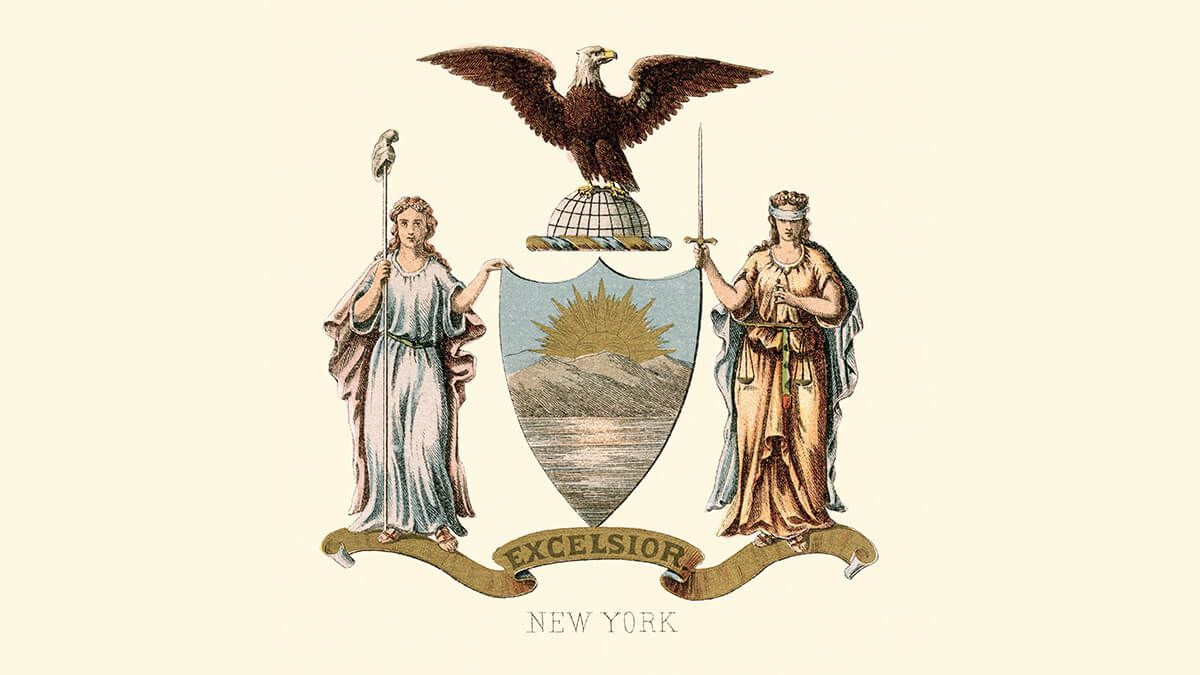Composition
The New York flag features a field of deep blue charged with the state coat of arms, centered.

The New York flag, one of unusually wide proportion, follows a common pattern for U.S. state flags, featuring the state coat of arms on a field of blue.
It spotlights many images seen in other state seals and flags like the goddess Liberty, Phrygian cap, and bald eagle, among others.
An original version of the flag was adopted in 1788 and the current iteration was officially adopted April 2, 1901. In 2020, the motto E pluribus unum was added to the seal.
The New York flag features a field of deep blue charged with the state coat of arms, centered.

the goddess Liberty, freedom
the goddess Justice, fighting tyranny
liberty
freedom from England after the Revolutionary War
justice and equality under the law
Europe and the Americas, the meeting of two worlds
natural beauty, commerce by waterway
Ever Upward, Out of many, one
The New York coat of arms was originally designed in 1777 and officially adopted on March 16th, 1778 (a few months before statehood).
A commission was appointed in 1880 to standardize its presentation.

The prominent color is a deep blue, with supporting colors within the coat of arms.
The New York flag is usually produce with a proportion of 1:2.


Features a field of buff, matching the color of troop uniforms.

Changed to a field of blue to better align with other state flags.

Current flag with updated seal featuring E pluribus unum.